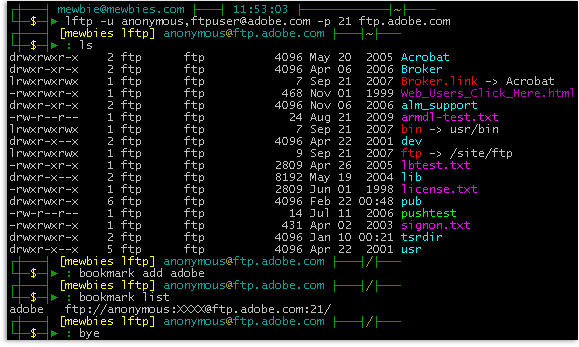

Once logins are automated, the final piece of the puzzle is to script a set of FTP commands. Sending FTP Commands from a BASH Shell Script Note that you can store multiple FTP server logins in the. You can test your settings by typing “ftp ” at a Terminal prompt, and it should automatically login. There are additional settings that can be included. Here is a typical block for a mythical FTP server: machine netrc, you define a block of settings for each FTP server you use, including the machine name, the login ID, and the password. If the permissions are not set correctly, the FTP client will assume it has been compromised and will refuse to use it. It is critical that you issue the chmod command to set the permissions so that only the owner of the file can view it. netrc file, open a Terminal and use the following commands: touch. netrc file allows FTP to perform automatic logins to FTP servers based on the name. netrc file is a plain text file that is hidden (the file name starts with a period) and lives in the root of your home directory. What makes FTP automation possible is a magical, little known file called. If you have a repetitive FTP task, the fun quickly fades into a mind numbing exercise.
#Mac ftp command mac
The default command line FTP program in OS X 10.5 Leopard resides at /usr/bin/ftpīy all outward appearances and behavior, the Mac FTP program is the standard BSD version. Everything you need waits patiently behind the warm glow of a Terminal session. The best part is, there is nothing to install. There is no shortage of GUI FTP programs, but kicking it old school on the command line allows you to easily automate uploads and downloads.


 0 kommentar(er)
0 kommentar(er)
